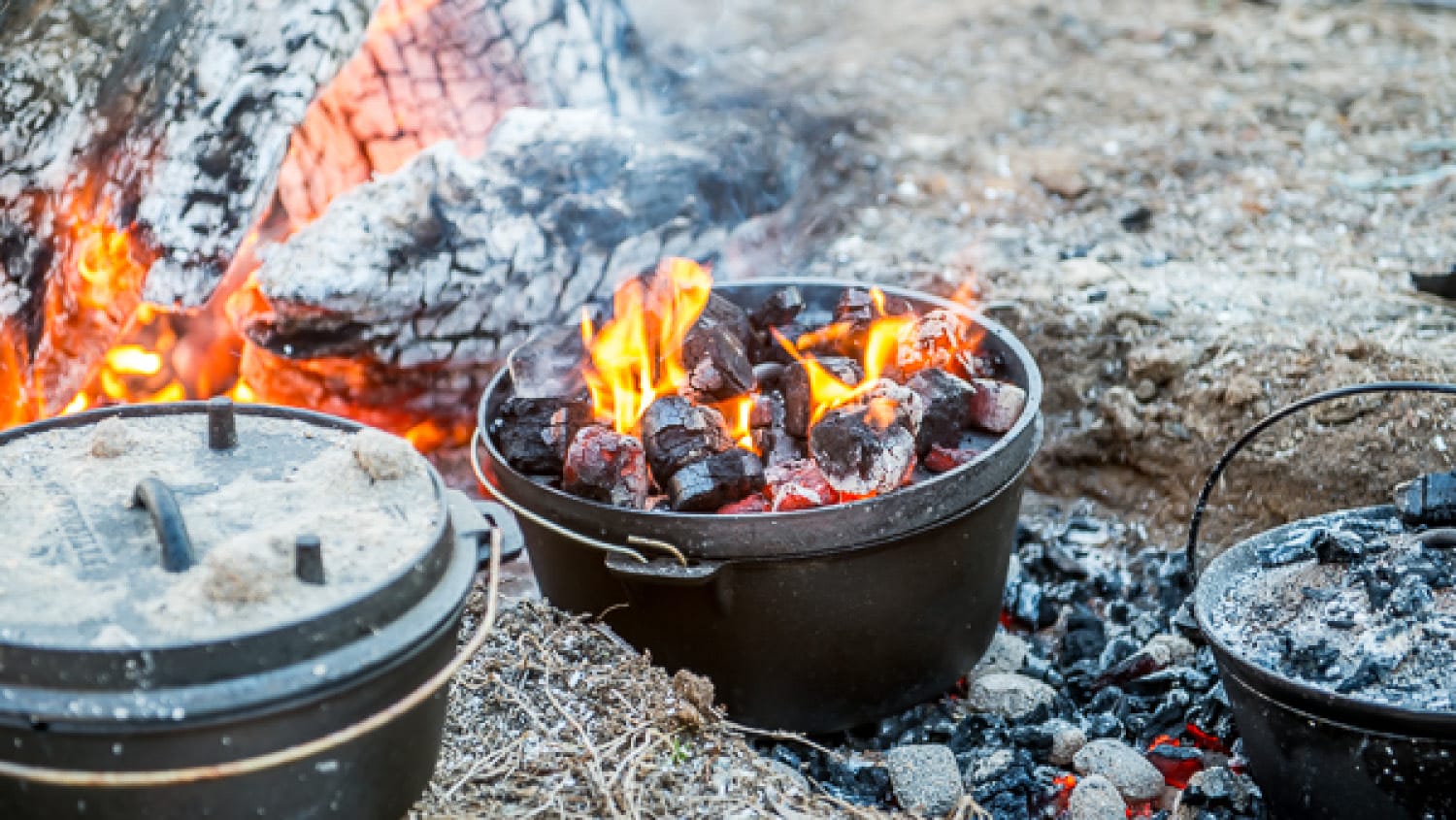The Perfect Recipe
It’s that time of year. Backyards on a Saturday and Sunday afternoon have gone from the smell of sausages sizzling away on the barbeque to the aroma of a slow cooking Camp Oven! In the summer, it’s as simple as throwing a few snags on the...

It’s that time of year. Backyards on a Saturday and Sunday afternoon have gone from the smell of sausages sizzling away on the barbeque to the aroma of a slow cooking Camp Oven!
In the summer, it’s as simple as throwing a few snags on the hotplate (while wives frantically whip up the latest Donna Hay salad that they get no thanks for. All the praise goes to the dirty old sausages hubby has lovingly turned every 10 minutes with a beer in hand!). Now it’s winter and whether you’re out in the bush camping, or sitting at home it’s time to drag out the cast iron pot and wipe off the cobwebs.
It seems that there is far more to the humble camp oven than throwing in a packet of diced steak, packet of frozen veggies and some Gravox. I found this out the hard way many years ago when I did just that, only to burn the bum out of it and being left with a meal that even the dogs turned their noses up at!
I spoke to a few Camp Oven experts recently to find out what it is that makes a good camp oven, and most importantly, what preparation goes into it.
*Gazza (not his real name), assures me that the very first tool you need before you go anywhere near the fire is the most important.
“You need a can, of beer preferably. That will help to get the creative juices flowing and take away any fear you may have of failure.”
Great tip, Gazza.
“You need plenty of coals, so ideally, you should probably get your fire cranking in the morning. Camp ovens are usually for tea, so get your coals cracking as early as you can. Now, don’t get too fussed on the meat, but in camp ovens we stay away from the ‘C’ word – CHICKEN. If you’re out the bush camping, you usually would throw in whatever food you’ve got left over if you’re leaving the next day. Anything goes, sausages, chops, steak, bacon, whatever. But if you’re making one at home, I prefer to go with a bit of rump or blade steak. Chops are also good though. Have a look in the fridge and whatever veggies you can find, chuck them in. Next, go to the pantry, or if you’re out the bush, clean out the camp box. There’s no such thing as out of date when it comes to ingredients in a camp oven.”
Interesting, Gazza. But are there any key ingredients when in preparation mode?
“You always need an onion, that’s a must. Try and get a good stock going. Curry powder is also a must, if you’ve got it. Or even a packet of Chicken Noodle Soup or French Onion. Once again, ignore the expiry date. Pretty much, whatever you’ve got goes in. Baked beans, carrots, tinned tomatoes.”
Gazza, what about those who like a stew with a bit of ‘kick’?
“Well, if you’re camping with us, we chuck in some chilli because we like it spicy. By the time you’ve got all your ingredients in, its time for another can. Stand back and have a look at the camp oven. Have you got enough coals under it? It there enough liquid in it so it doesn’t stick? Once you can check those things off, give it a stir every hour and remember to keep yourself ‘hydrated.’”
Good advice, Gazza. How long do you let the camp oven cook for?
“Cook it for as long and slow as you can. Keep an eye on the heat, making sure it’s not cooking too quickly. If you start it at lunchtime, you can enjoy it for tea that night. Mind you, teatime can be anywhere from 6 to 9pm or midnight!”
So, Gazza. How do you work out the cooking time?
“It’s the can by can rule. Normally, the way it works is once you’re feeling a bit tired, then the camp oven is ready. I forgot to mention that you should have some of those Chat Potatoes boiling towards the end and serve them with the camp oven. Or, make your own damper. I can’t ever remember how to make that, I just use a bit of flour, a bit of milk, I think. Roll it up, chuck it in foil and whack it in the coals or in another pot. Beautiful!”
Gazza assures me that the Breakfast Camp Oven is even better.
“Oh, the next morning when you’re feeling a little sluggish, the stew will still be warm from the night before, so whack it on some toast and enjoy it with a cup of tea. Always better the next day!”
I have been at the other end of a Camp Oven, when after a few days away camping in the bush, I have found myself in the company of the returned campers. Something Gazza perhaps forgot to mention was the tools required for the days after eating a Camp Oven Stew – a sufficient amount of loo paper and a long hot shower!




